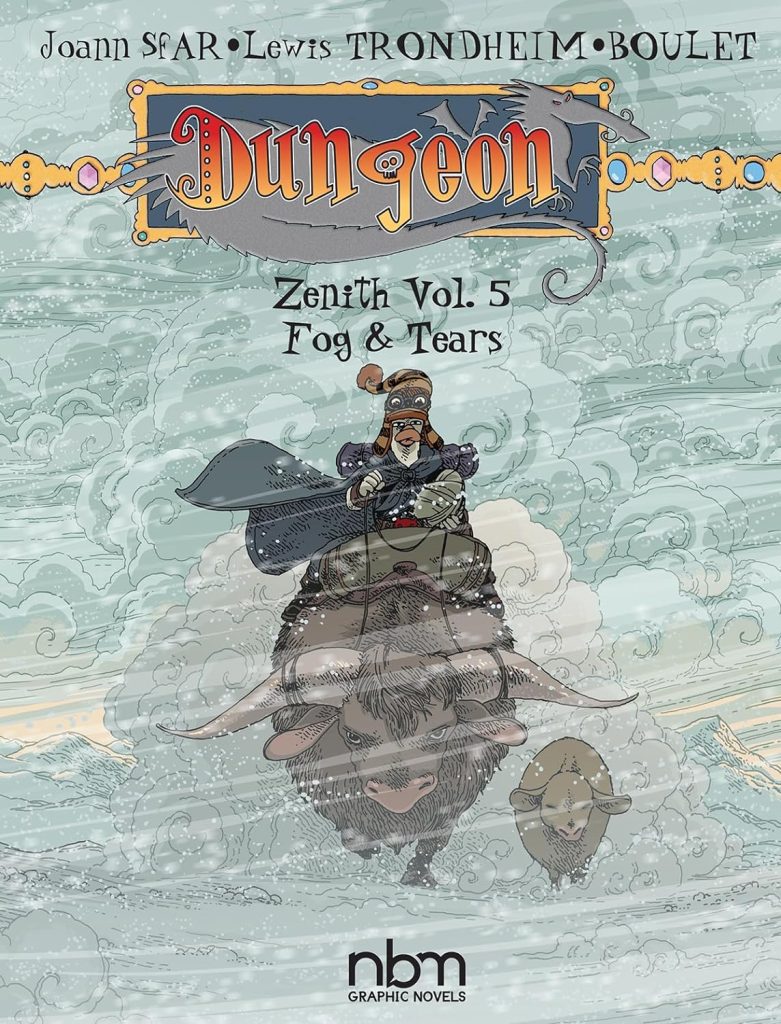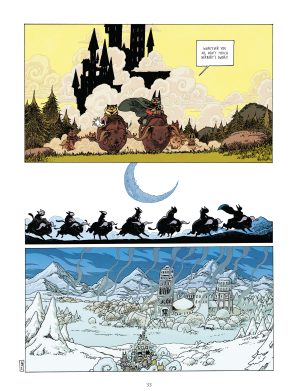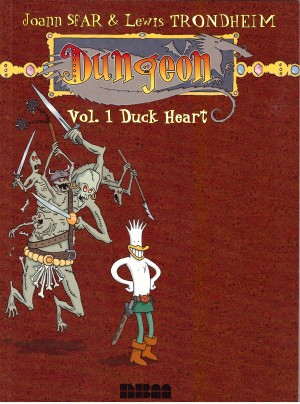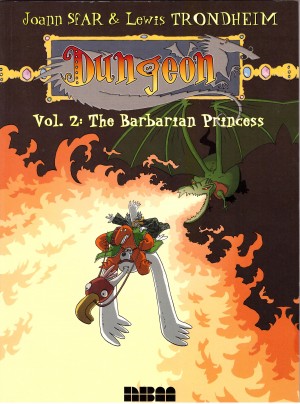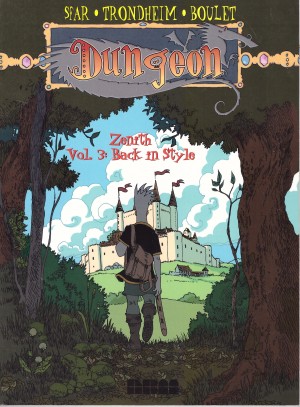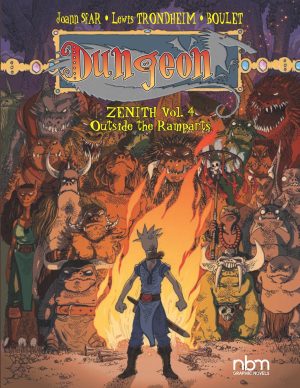Review by Ian Keogh
The surprise continuation of Dungeon Zenith picks up pace with this combination of another two volumes translated from French, this package appearing only months after the second volume was published in France.
Without knowing anything about their domestic circumstances, it’s unlikely ‘Fog & Tears’ is a story Joann Sfar and Lewis Trondheim would have written as younger men as the primary concern is the fear of harm coming to a baby. Herbert talked about imminent fatherhood in Vol. 4, and the title story begins with the birth announcement. If his marriage to Isis previously seemed unlikely given their respective personalities, a chasm opens up when she announces the baby will have to undergo her people’s survival test. This involves dropping the infant into a pit of starving wolves. If that doesn’t sound the basis for the knockabout comedy of previous volumes, rest assured, it’s present in quantity despite the grim opening. Nor is there a massive infusion of sentimentality despite the cute, wide-eyed baby.
Marvin is also a new father, and while his child isn’t as central to the second story, Sfar and Trondheim still supply comedy moments from the situation, such as Marvin staggering around near-blind from having to wear a “paternity tiara”. Tradition dictates he’s not actually allowed to see the baby he cares for. ‘Incantatory Spell’ concerns itself with the greater plot of the Keeper and his allies attempting to regain control of the Dungeon, but anyone bothered with that isn’t really attuned to what makes Dungeon so good. It’s not the plot but the the creative diversions exploiting genre tropes, and the consistently imaginative ways the established personalities play into that. While in the early days these were all funny, Sfar and Trondheim now occasionally feature a scene where there are no jokes, just a comment on humanity or something incredibly touching.
Since they stopped drawing Dungeon Zenith themselves, Boulet (Gilles Roussel) has been the creators’ artistic choice, and his madcap personalities and imaginative locations now characterise Dungeon in the Zenith era every bit as much as the gloriously meandering plots. Because the cast is largely restricted to previously introduced people there’s not as much scope for designing new eccentricities, but when the opportunity arises he comes up trumps. A bunch of human organs in a glass tube with eyes is noteworthy, and look at the sample art for some beautiful composition.
Always keeping in mind the high standards overall, this isn’t quite the match of Vol. 4 because the second story is just too much of a shaggy dog tale. It comes to life at the end, though with a typically ridiculous solution. And Dungeon remains head and shoulders above most genre pastiches.
